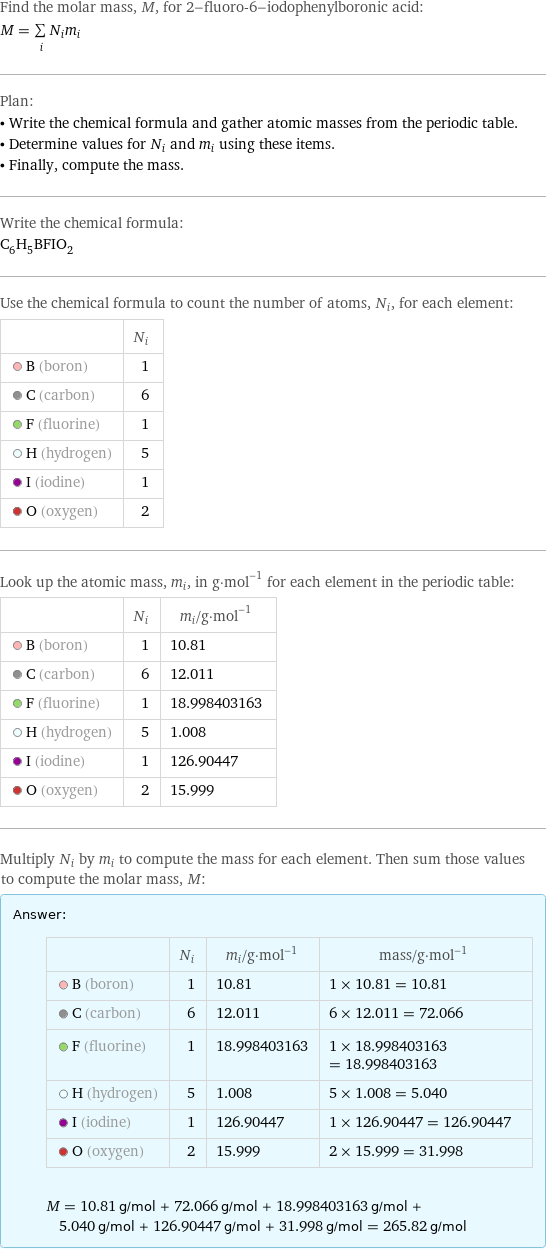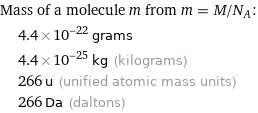Input interpretation

2-fluoro-6-iodophenylboronic acid | molar mass
Result

Find the molar mass, M, for 2-fluoro-6-iodophenylboronic acid: M = sum _iN_im_i Plan: • Write the chemical formula and gather atomic masses from the periodic table. • Determine values for N_i and m_i using these items. • Finally, compute the mass. Write the chemical formula: C_6H_5BFIO_2 Use the chemical formula to count the number of atoms, N_i, for each element: | N_i B (boron) | 1 C (carbon) | 6 F (fluorine) | 1 H (hydrogen) | 5 I (iodine) | 1 O (oxygen) | 2 Look up the atomic mass, m_i, in g·mol^(-1) for each element in the periodic table: | N_i | m_i/g·mol^(-1) B (boron) | 1 | 10.81 C (carbon) | 6 | 12.011 F (fluorine) | 1 | 18.998403163 H (hydrogen) | 5 | 1.008 I (iodine) | 1 | 126.90447 O (oxygen) | 2 | 15.999 Multiply N_i by m_i to compute the mass for each element. Then sum those values to compute the molar mass, M: Answer: | | | N_i | m_i/g·mol^(-1) | mass/g·mol^(-1) B (boron) | 1 | 10.81 | 1 × 10.81 = 10.81 C (carbon) | 6 | 12.011 | 6 × 12.011 = 72.066 F (fluorine) | 1 | 18.998403163 | 1 × 18.998403163 = 18.998403163 H (hydrogen) | 5 | 1.008 | 5 × 1.008 = 5.040 I (iodine) | 1 | 126.90447 | 1 × 126.90447 = 126.90447 O (oxygen) | 2 | 15.999 | 2 × 15.999 = 31.998 M = 10.81 g/mol + 72.066 g/mol + 18.998403163 g/mol + 5.040 g/mol + 126.90447 g/mol + 31.998 g/mol = 265.82 g/mol
Unit conversion

0.26582 kg/mol (kilograms per mole)
Comparisons

≈ 0.37 × molar mass of fullerene ( ≈ 721 g/mol )

≈ 1.4 × molar mass of caffeine ( ≈ 194 g/mol )

≈ 4.5 × molar mass of sodium chloride ( ≈ 58 g/mol )
Corresponding quantities

Mass of a molecule m from m = M/N_A: | 4.4×10^-22 grams | 4.4×10^-25 kg (kilograms) | 266 u (unified atomic mass units) | 266 Da (daltons)

Relative molecular mass M_r from M_r = M_u/M: | 266